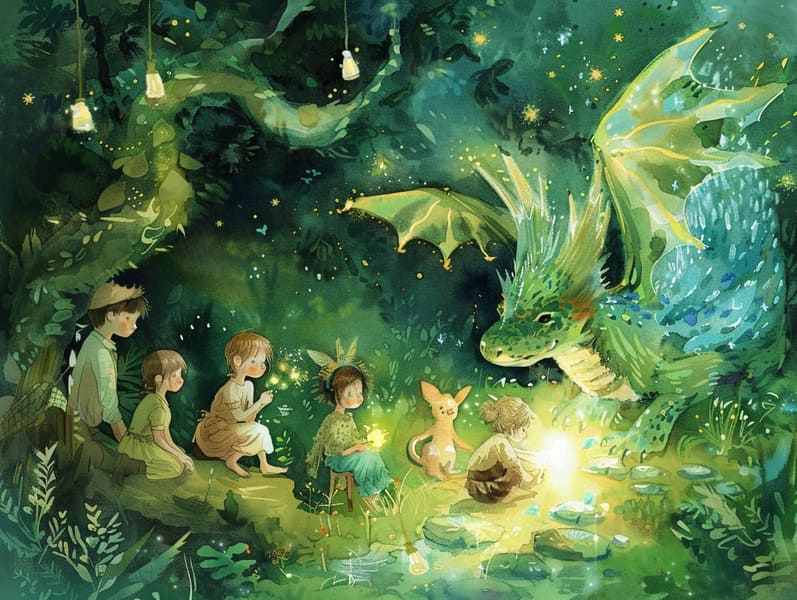The Journey of Famous Fairy Tales and Its Unwavering Attraction.
The Journey of Famous Fairy Tales and Its Unwavering Attraction.
Blog Article

Legendary fairy tales have deep roots. These tales have been recounted from one generation to the next millennia before they were ever written down. They developed from a variety of societies, including Middle Eastern traditions. They were initially transmitted among older generations, often carrying themes and messages relevant to the societal norms and beliefs of the time.
The Grimm brothers, Jacob and Wilhelm Grimm, were among the first to collect many of these beloved stories. Their collection, "Grimm's Story Collection," included stories like "Ashenputtel," "The Story of Hansel and Gretel," and "Snow White," which have since become classics in the world of timeless fairy tales. Similarly, Hans Christian Andersen's imaginative tales, such as "The Sea Maid," and "The Ugly Duckling," have enchanted hearts worldwide, securing their place in the pantheon of timeless fairy tales.
Though they are centuries old, fairy tales remain as pertinent as ever, especially as children's bedtime stories. These whimsical stories are now available in many formats, including vibrantly illustrated books, magical animations, and digital fairy tales.
Their continued relevance can be ascribed to several delightful features:
Important Morals: Classic fairy tales often offer important moral lessons. Stories like "The Wolf and the Liar" teach the value of sincerity, while "The Tortoise and the Hare" exemplify the virtues of steadfastness and unpretentiousness. These tales offer kids clear distinctions between virtue and vice, forming their moral compass in a soft yet significant way.
Empathy and Awareness: Fairy tales frequently depict heroes facing problems and hurdles, encouraging listeners to understand with their struggles and champion their triumphs. For instance, "The Story of Beauty and the Beast" points out the importance of seeing beyond the surface to know the true essence of a character, encouraging awareness and awareness.
Cultural Understanding: Many classic fairy tales are rich in the cultural contexts from which they arose. Discovering these tales can provide informative snapshots into different traditions, encouraging a sense of cultural insight and knowledge.
Fantasy and Imagination: The imaginative elements in fairy tales—magical spells—awaken children’s dreaming abilities. These fairy tales bring readers to fantasy realms, generating fantasy-filled thoughts and a these guys sense of curiosity that endures a lifetime.
Classic fairy tales are not only mesmerizing but also informative. They work as bewitching tools in cultivating various intellectual and emotional capacities in the young. When timeless fairy tales are spoken, they nurture speech development by bringing new linguistic elements and elaborate sentence structures. This practice also advances listening abilities and attentiveness, as children focus on every detail, eager to see what happens next.
Furthermore, examining the themes and characters of classic fairy tales can foster cognitive skills and logical thinking. Kids are educated to see patterns, foresee events, and get cause and effect. These explorations also promote kids voice their thoughts and feelings, enhancing their emotional intelligence.
In today’s digital age, the proliferation of free fairy tales online has made these stories more within reach than ever. Web-based platforms and apps extend ample collections of famous fairy tales that can be perused or heard anytime, anywhere. Fairy tales spoken are particularly prevalent, featuring an immersive method for children to delight in these entrancing tales. Narrated books and read-out-loud stories take characters and settings to life, often accompanied by enchanting music and soundtracks that enhance the tale-telling adventure.
The everlasting appeal of traditional fairy tales lies in their ability to alter to contemporary times while maintaining their key morals. Contemporary reinterpretations of these tales often feature more varied characters and modern settings, making them understandable to today’s audience. However, the underlying themes of gallantry, humanity, and even-handedness remain unchanged, continuing to move listeners of all ages.
Fairy tales also offer a sense of familiarity and comprehensibility. They offer a ordered narrative with a plain beginning, middle, and end, often concluding with the ending of conflicts and the triumph of honesty over deceit. This consistency can be calming for young readers, imparting a sense of consistency in an always shifting world.
Timeless fairy tales continue to allure and teach new generations, maintaining their allure and significance in modern society. As children's bedtime stories, they allow a perfect blend of wonder and wisdom, cultivating moral values, empathy, and creativity. The proliferation of web-based fairy tales and the favor of fairy tales narrated certify that these timeless tales remain reachable to new generations.
By protecting and spreading these stories, we continue to venerate the rich tapestry of creativity and cultural heritage. Whether you are browsing a artistically illustrated book, delving into a virtual library, or playing an read-aloud book, the grace of Grimm's fairy tales is always within reach. These narratives point out of the unchanging strength of narratives and its ability to tie us across generations and cultures.
Even if you are accessing a colorful picture book, seeing a online collection, or playing an spoken story, the enchantment of traditional fairy tales is always within reach.
These tales convey of the timeless influence of storytelling and its ability to unite us across eras and regions, creating a bond that fascinates and enlightens alike.